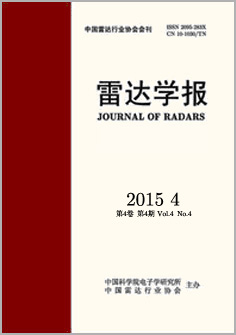- Home
- Articles & Issues
-
Data
- Dataset of Radar Detecting Sea
- SAR Dataset
- SARGroundObjectsTypes
- SARMV3D
- AIRSAT Constellation SAR Land Cover Classification Dataset
- 3DRIED
- UWB-HA4D
- LLS-LFMCWR
- FAIR-CSAR
- MSAR
- SDD-SAR
- FUSAR
- SpaceborneSAR3Dimaging
- Sea-land Segmentation
- SAR Multi-domain Ship Detection Dataset
- SAR-Airport
- Hilly and mountainous farmland time-series SAR and ground quadrat dataset
- SAR images for interference detection and suppression
- HP-SAR Evaluation & Analytical Dataset
- GDHuiYan-ATRNet
- Multi-System Maritime Low Observable Target Dataset
- DatasetinthePaper
- DatasetintheCompetition
- Report
- Course
- About
- Publish
- Editorial Board
- Chinese
| Citation: | Zeng Xiang-jie, Qi Xiang-yang. Spaceborne Regional Surveillance Ground Moving Target Indication Based on Squint-TOPSAR[J]. Journal of Radars, 2015, 4(4): 401-410. doi: 10.12000/JR14130 |
Spaceborne Regional Surveillance Ground Moving Target Indication Based on Squint-TOPSAR
DOI: 10.12000/JR14130 CSTR: 32380.14.JR14130
-
Abstract
For military or civilian activities, it is important to monitor the direction of moving targets in a wide area. Traditional regional monitoring uses the airborne scanning mode (ScanSAR) within the limits of the national airspace. The inherent characteristics of ScanSAR do not apply to spaceborne regional monitoring. In this paper, the spaceborne regional surveillance Ground Moving Target Indication (GMTI) mode based on squint-TOPSAR is proposed. The proposed method uses the TOPSAR mode that improves the low SNR of spaceborne ScanSAR. The full-aperture imaging algorithm for squint-TOPSAR is used in data focusing. The Displaced Phase Center Antenna (DPCA) and Constant False Alarm Rate (CFAR) methods are used to accomplish the moving target indication. The relation between the interferometric phase and the speed of moving target is used to estimate the speed of the moving target and mark the target location in the SAR image. The differences between real and simulation data are analyzed. The simulation results demonstrate the effectiveness of the proposed method. -

-
References
-
Proportional views



 Submit Manuscript
Submit Manuscript Peer Review
Peer Review Editor Work
Editor Work




 DownLoad:
DownLoad: